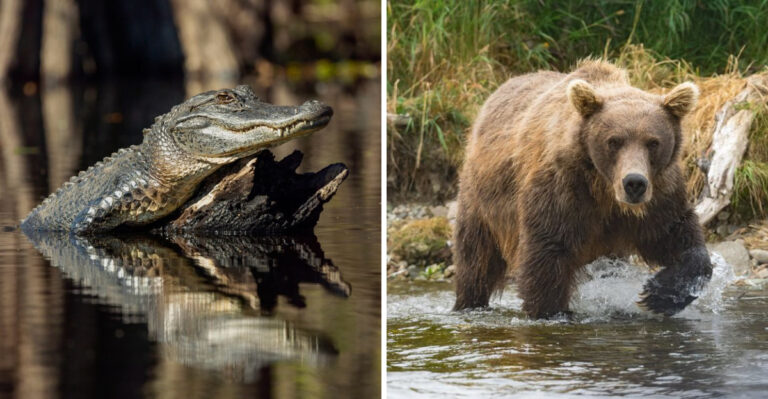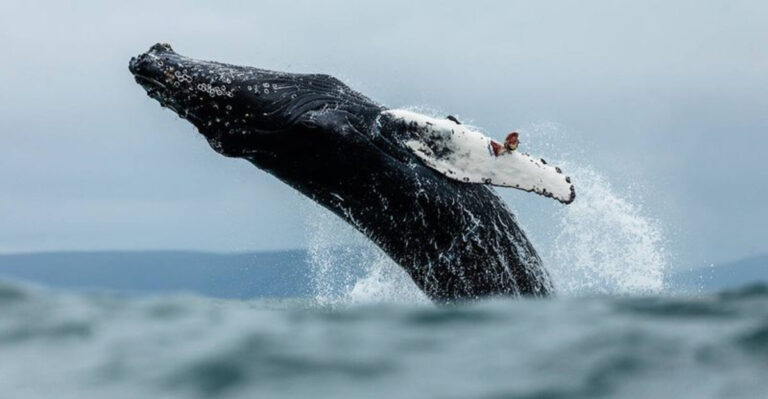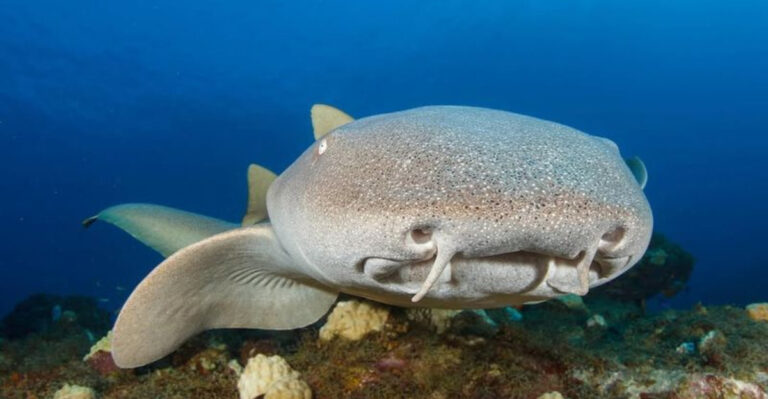How Humpback Whales Use Bubble-Nets To Hunt Fish
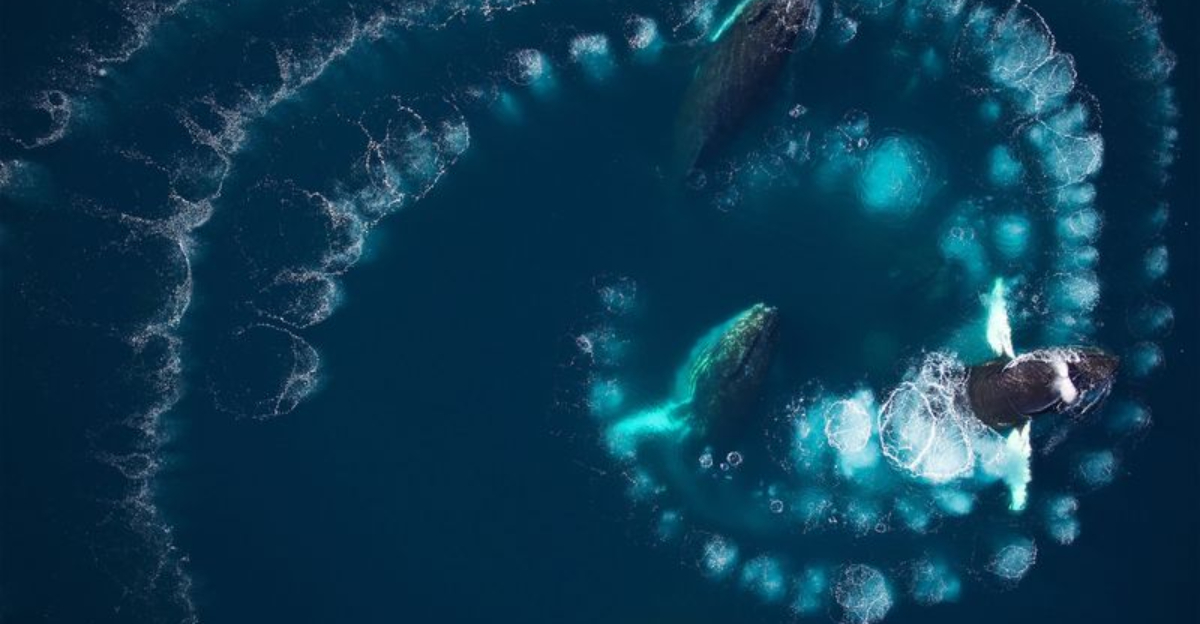
Humpback whales are master hunters of the ocean, using one of nature’s most clever fishing techniques. Bubble-net feeding involves these massive marine mammals working together to trap small fish in a cylinder of bubbles.
This amazing hunting strategy showcases the intelligence and teamwork of these gentle giants, allowing them to feast efficiently on schools of herring, krill, and other small prey.
1. It Starts With A Deep Dive
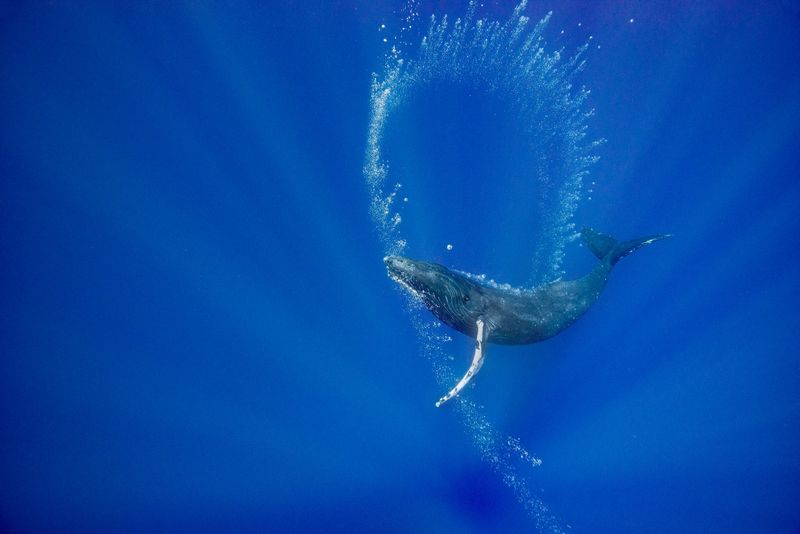
The hunting sequence begins when a whale spots a promising school of fish. Plunging beneath the prey, the whale positions itself strategically, sometimes descending 50 feet or more.
From this vantage point, the humpback can assess the fish school’s size and movement patterns. The deep dive serves as preparation for the bubble curtain that will follow, giving the whale the perfect starting position for its upward spiral.
2. Whales Blow Bubbles In Spirals
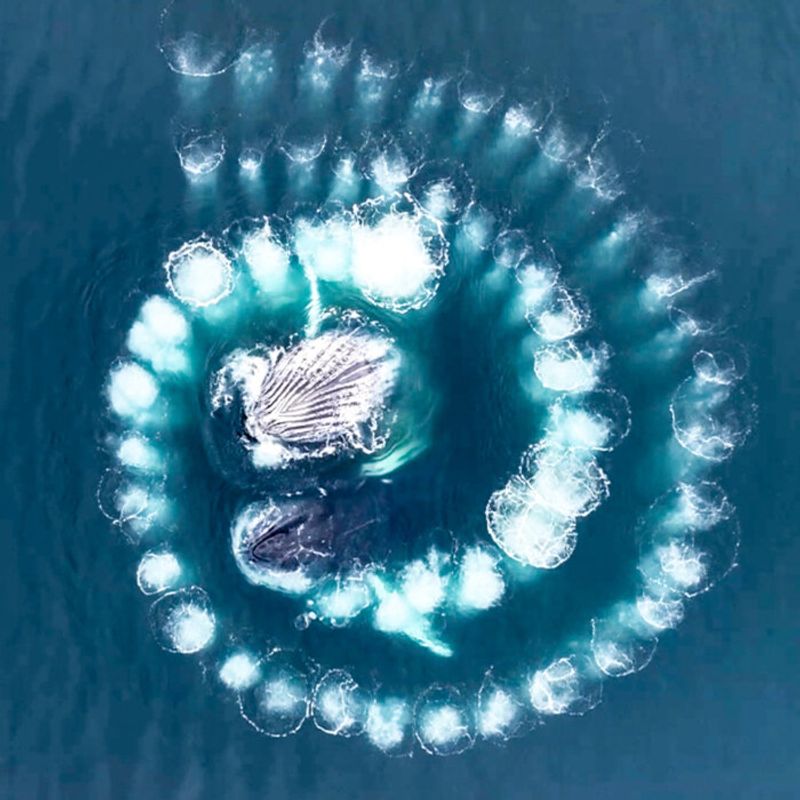
The magic happens as the whale begins its ascent. Swimming in a tight circle, it releases a continuous stream of air from its blowhole, creating a cylinder of bubbles that expands upward through the water.
This spiral pattern requires incredible body control and spatial awareness. The bubbles form a wall that can span 30 feet across, with the whale carefully maintaining the circular shape as it swims upward toward the surface.
3. The Bubbles Trap The Fish
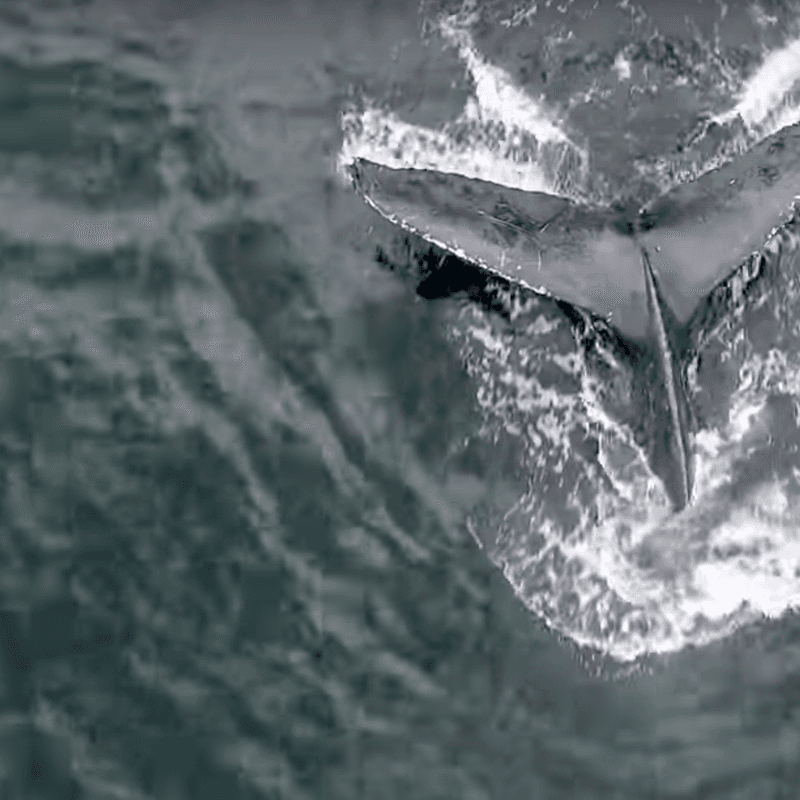
Small fish instinctively avoid crossing the bubble barrier. They perceive the wall of bubbles as a physical obstacle and swim away from it, unknowingly herding themselves into a tighter and tighter group at the center.
This concentrated ball of fish makes for an efficient meal. The bubble curtain acts like an invisible net, becoming narrower toward the surface and preventing escape in all directions except upward – exactly where the whales will strike.
4. A Feeding Call Signals The Strike
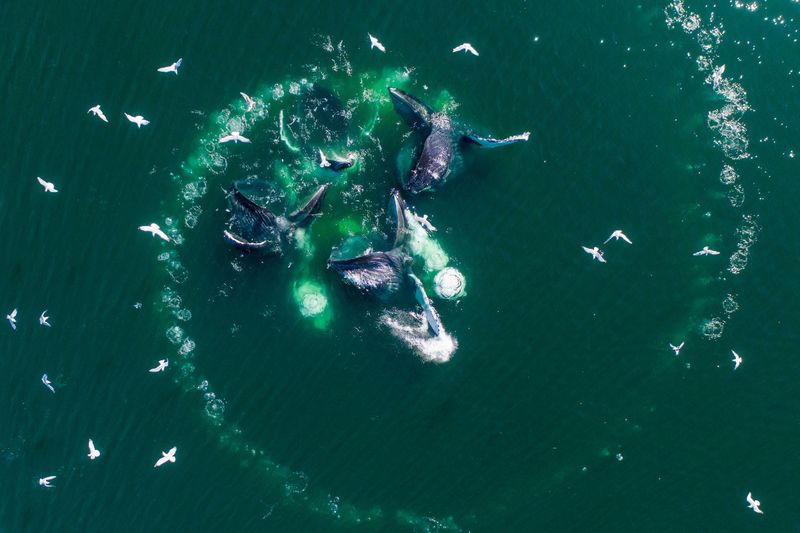
Before the final lunge, one whale emits a distinctive trumpeting sound. This specialized vocalization serves as the dinner bell, alerting all participating whales that it’s time to surge upward for the feast.
Scientists have recorded these feeding calls using underwater microphones. The sound is unlike any other whale vocalization – a unique, loud trumpet that rises in pitch and volume just before the coordinated feeding lunge begins.
5. They Lunge Up With Open Mouths
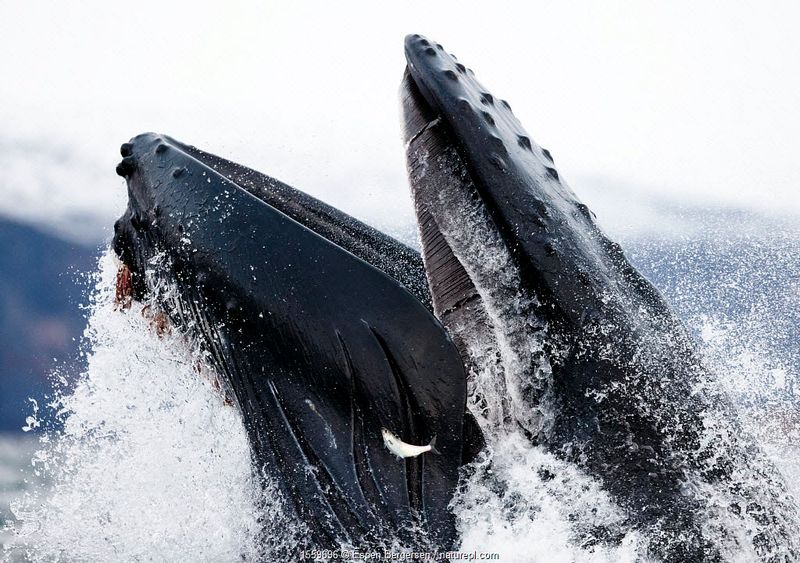
The grand finale arrives with explosive energy. The whales power upward through the center of the bubble net, mouths gaping wide to engulf the concentrated fish along with hundreds of gallons of seawater.
Sometimes they breach the surface dramatically, their massive heads emerging like submarines. The sight of multiple 40-ton whales simultaneously surging upward with mouths agape ranks among nature’s most spectacular hunting displays.
6. Their Throat Grooves Expand Like An Accordion
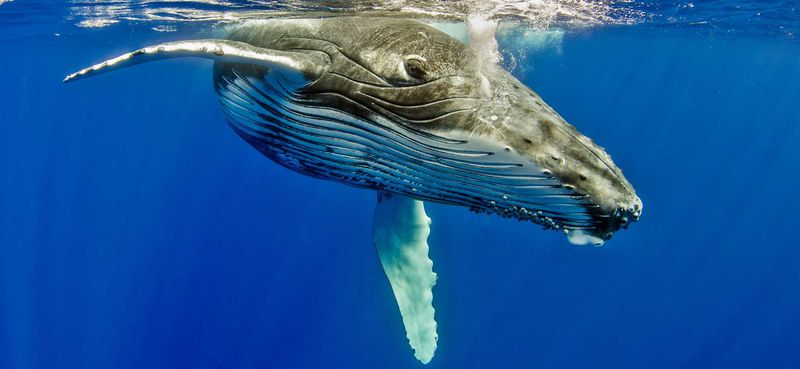
A humpback’s secret weapon lies in its expandable throat pleats. These grooved folds of skin stretch dramatically during feeding, ballooning outward to increase mouth volume by several times.
Resembling a massive accordion, these pleats allow the whale to take in an astonishing amount of water and prey. A large humpback can expand its throat to hold a volume roughly equivalent to a school bus – far more than its normal throat size would suggest.
7. Bubble-Net Feeding Is A Team Effort
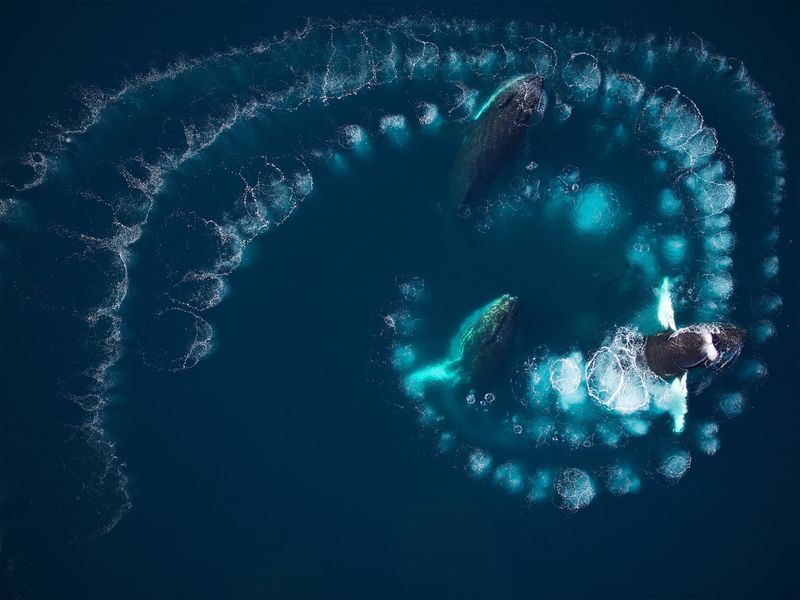
Cooperation defines this remarkable hunting strategy. Multiple whales coordinate their movements with astonishing precision, communicating through vocalizations to ensure perfect timing.
Each whale in the group has a specific job – some create bubbles, others herd fish, and some give the signal to feed. This division of labor showcases the social intelligence of humpbacks, proving they’re not just massive mammals but brilliant team players.
8. They Filter The Water Using Baleen Plates
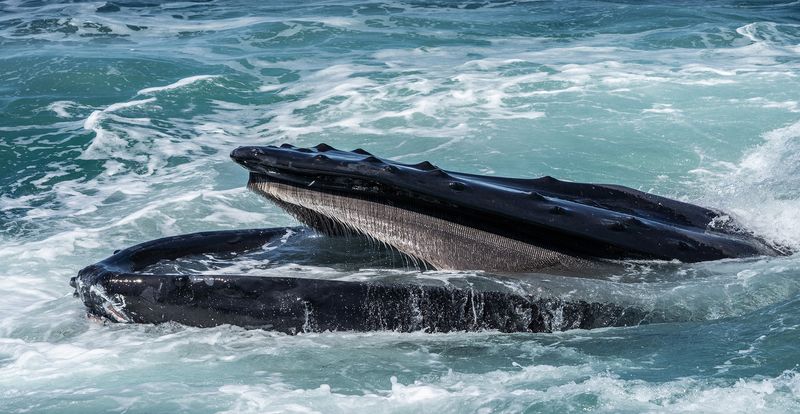
After capturing fish and water, the real processing begins. The whale’s mouth contains hundreds of baleen plates – flexible, fingernail-like structures that hang from the upper jaw and act as sieves.
Pushing with its massive tongue, the whale forces water out through these baleen filters while trapping fish inside. A single gulp might contain thousands of small fish that remain caught in the hairy inner edges of the baleen as the water escapes.
9. Bubble-Net Feeding Requires Precision And Practice
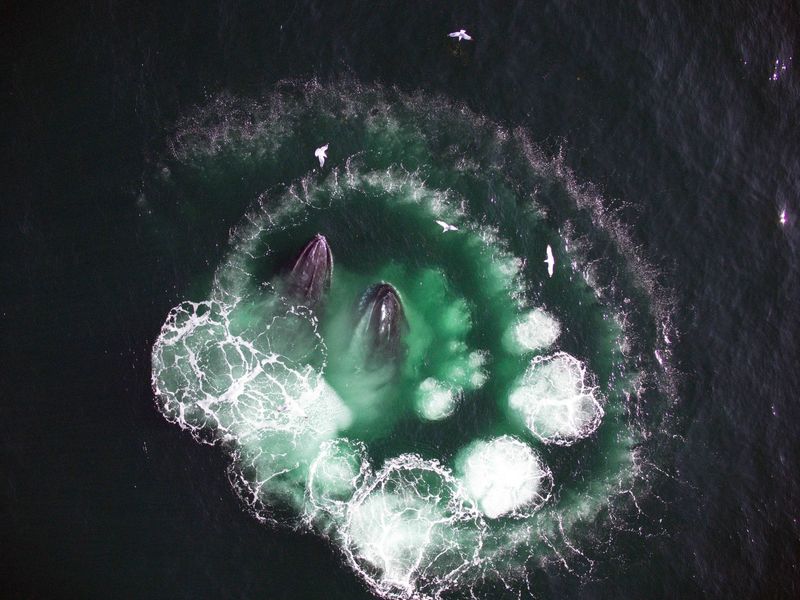
Young humpbacks aren’t born knowing this technique. They learn by watching experienced adults, gradually developing the skills through observation and practice over several years.
Calves follow their mothers closely during feeding seasons, observing the intricate dance of bubble creation. Scientists believe it takes at least 2-3 years for a young whale to master the coordination required for effective bubble-net feeding.
10. Each Pod Has Its Own Technique
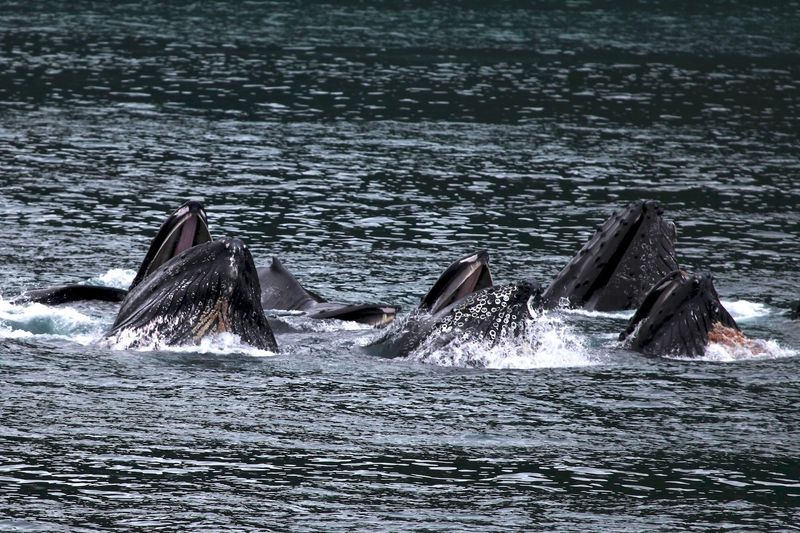
Fascinatingly, different groups of humpbacks develop their own bubble-net variations. Some pods create perfect circles, while others form spiral patterns or even figure-eights.
These cultural differences pass through generations within specific populations. Alaska’s humpbacks often use a technique called “flick-feeding,” adding a tail slap to stun fish before creating the bubble net – a regional specialization not commonly seen elsewhere.
11. It’s Rarely Seen Outside Of Certain Regions
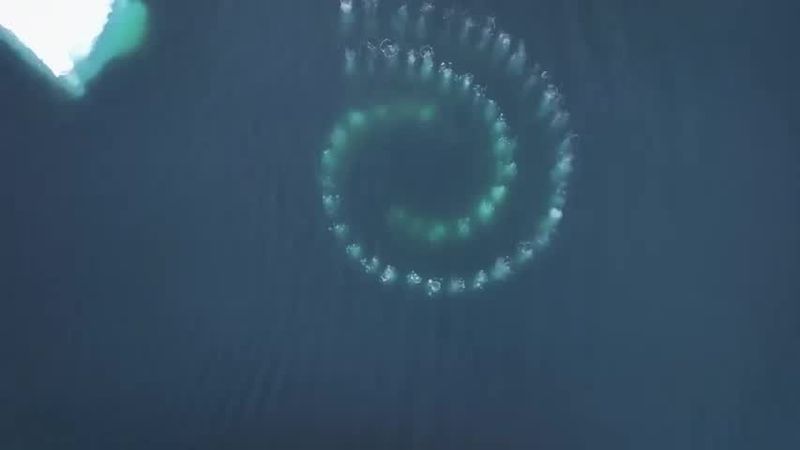
Bubble-net feeding isn’t a universal humpback behavior. This specialized technique appears primarily in nutrient-rich, cold-water feeding grounds like Southeast Alaska, the Gulf of Maine, and parts of Antarctica.
During winter breeding seasons in tropical waters, humpbacks rarely feed at all. The bubble-net strategy emerges during summer feeding seasons when whales must consume enough food to sustain themselves through months of fasting.
12. Humans Learned About It Through Advanced Technology
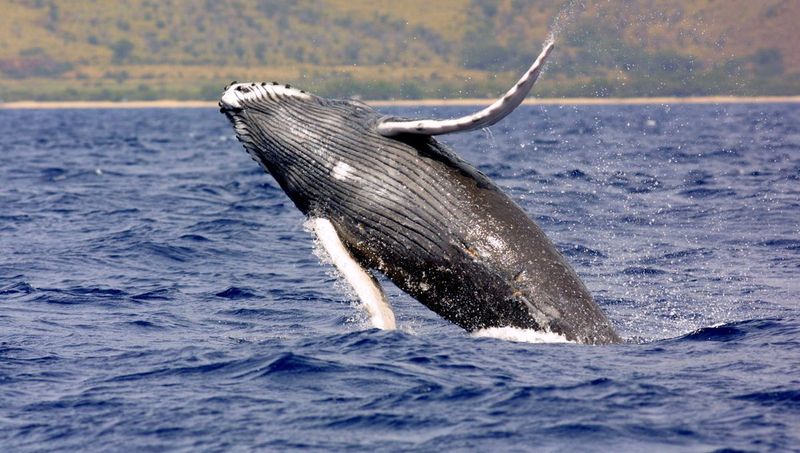
Capturing this underwater marvel required technological innovation. Researchers use drones for aerial views, underwater cameras for close-ups, and hydrophones to record the crucial feeding calls.
Sonar technology has been particularly revealing, allowing scientists to visualize the complete three-dimensional structure of bubble nets. Without these tools, much of this remarkable behavior would remain hidden beneath the waves, invisible to human observers.

